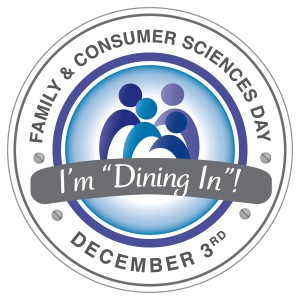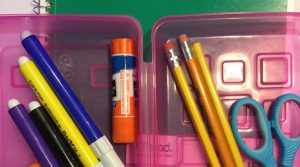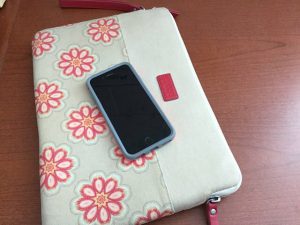
by Angela Hinkle | Nov 21, 2019
Make the pledge Tuesday, December 3rd to Dine In for better health – physical, social, and cultural.
Why
Most of us eat every day without thinking about it. We need to eat to nourish our body, so it’s just a regular thing we do. But eating also can be an important social and cultural way for families to come together.

FCS Dine In Day
When we eat together as a family, it gives us the opportunity to practice cultural traditions and share food histories. We get the chance to explore new foods and learn new skills – like eating with chopsticks. We may get the chance to learn and practice table manners and learn literary and conversation skills. Paul Fieldhouse of the Vanier Institute of the Family says, “For young children, ‘table talk’ may be the main source of exposure to family conversation and the expression of thoughts, ideas, and emotions.” Eating the family meal also can help us de-stress by setting a reassuring rhythm and structure to our day.
Eating family meals at home has additional benefits. The University of Washington found that families who cook and eat more often at home tend to eat a healthier diet. Their Healthy Eating Index is high – meaning they eat more fruits and vegetables and less calories, sugar, and fat. They eat smaller portions helping to regulate weight. Some research suggests we eat smaller portions at home because we eat more slowly and talk more. This, however, does not equate to a higher cost. Meals cooked at home generally cost less than those eaten out.
How
So, how can your family eat more meals together at home?
- Try making and eating meals at home a priority for your family. Think about how important it is spending time together.
- Keep it simple. Don’t worry about making a big, fancy meal.
- Start with just a few meals a week. Then slowly add more meals together as you find your “family meal groove.”
- Let the whole family help plan meals. Think about foods your family likes and build around those ideas. Try to get all the MyPlate healthy food groups in – whole grains, plenty of fruits and vegetables of all colors, shapes, and textures, lean plant and animal proteins, and low- and no-fat dairy. Make your grocery list together.
- Let everyone be involved in planning, preparing, table setting, and cleaning up afterwards.
- Make it a goal to start this December 3rd to Dine In for better health.
Resources:
(Still) Eating Together: The Culture of the Family Meal. Retrieved November 16, 2019 from https://vanierinstitute.ca/eating-culture-family-meal/
Cooking at Home Tonight? It’s Likely Cheaper and Healthier. Retrieved November 15, 2019 from https://www.sciencedaily.com/releases/2017/03/170314150926.htm

by Angela Hinkle | Oct 22, 2019
Delicious, nutritious, and super helpful for today’s needs, peanut butter is a great addition to your shopping cart. But it’s more than just a tasty and healthy food that also helps those in need (more on that below). Pound for pound, peanut butter saves.

Nutty for Peanut Butter
Photo Source: Angela Hinkle
Compared to a pound of ground beef, a pound of peanut butter saves:
- Money at the grocery store. A pound of peanut butter currently comes in at around $2.50. A pound of ground beef will run you around $3.82.
- Time. It takes about 2-3 minutes to make a peanut butter and jelly sandwich. A burger at home will take you anywhere from about 8-15 minutes to prepare.
- Environmental costs. If you make a peanut butter and jelly sandwich for lunch instead of a hamburger, you can save 2.5 pounds of carbon dioxide, 133 gallons of water, and 24 square feet of crop land.
- Saturated fat. That’s the kind that tends to clog up arteries and cause health problems. Eating the PB&J gives you about 3 grams. You consume about 10 grams of saturated fat in a 90% lean quarter pound hamburger.
- Utilities. No gas, coals, or electricity is required to cook or safely store peanut butter.
- Hunger. Families in hardship situations often need help from food pantries. The most requested item from these pantries is – yes, you guessed it – peanut butter. It is shelf stable so you don’t have to worry about keeping it cold or heating it up. People like it. And it is a healthy plant-based food with fiber and oleic acid – a healthier monounsaturated fat.
Maybe you’re like me – you like a really good, juicy all-beef burger. Every once in a while, sure. But pound for pound, peanut butter really can save the day.
Here’s how you can help with the local hunger part:
- Buy peanut butter. Look for BOGOS (Buy One Get One Free Sales). Keep one for yourself. Then…
- Now through November 27, donate unopened jars of peanut butter for the Peanut Butter Challenge. Check with your Florida Panhandle UF/IFAS Extension Office for collection sites.
- All collected peanut butter will be given to local food pantries to assist hungry families in need.
So save, save, save with peanut butter. And help save a family from hunger.
Check out 2019 Peanut Butter Challenge for additional information.
Resources: https://foodtank.com/news/2013/12/why-meat-eats-resources/ and https://www.farmprogress.com/peanut/peanut-s-environmental-footprint-stretches-beyond-farm

by Angela Hinkle | Sep 3, 2019
Hurricane season is June 1 to November 30, with peak season in September and October. And hurricanes are not the only disasters we have to contend with. Living Well in the Panhandle provides the trusted Disaster Resources you need so you know what to do to keep your family and you living well.
Disaster Resources
Below are helpful resources for preparing for and handling the aftermath of a disaster. For more information, please contact your local UF/IFAS Extension Office.
Food Safety
Is My Food Safe to Eat?
Keeping Your Food Safe During Emergencies: Power Outages, Floods, and Fires
USDA – A Consumer’s Guide to Food Safety-Severe Storms and Hurricanes Guide
Well Water Safety
Well Water Testing
Housing
Search for an open emergency shelter near you by texting SHELTER and your zip code to 4FEMA (43362) Example: SHELTER 01234

Lightning storm. Photo Source: UF/IFAS
Cleaning Up After a Hurricane
Safety Comes First!
Get the Right Tree Care Professional
Hiring an Arborist – Spanish
Cleaning Mold After a Flood
Hurricanes and Mosquitoes
Mosquito Control Tips for Homeowners
Money Management/Consumer Issues
Avoiding Fraud and Deception
Six Steps in Making an Insurance Claim
Replacing Lost or Damaged Documents
FEMA – Individual Disaster Assistance
FEMA – Interim Housing Resources
USDA Farm Service Agency Disaster Assistance
Disaster Recovery Loans
Tax Relief After a Disaster
Complaints – If you have a complaint about disaster relief assistance, contact the Department of Homeland Security’s Inspector General’s Office at 1-800-323-8603.
Family Health and Wellness
Call the Disaster Distress Helpline 24/7 for free counseling – 1-800-985-5990 (TTY) 1-800-846-8517
OR text TalkWithUs to 66746
Mental Health for Adults
Mental Health for Kids
Mental Health for Adolescents
Agriculture and Natural Resources
Practices to Minimize Flooding Damage to Commercial Vegetable Production
Florida Panhandle Agriculture
Florida Panhandle Agriculture Facebook

by Kendra Hughson | Jul 9, 2019
It’s still the dog days of summer so it’s hard to believe that the first day of school is right around the corner. Soon, the kids will be wrapping up the lazy days of summer and the fun of summer camps and family vacations to prepare for the back to school routine. Making school supply shopping a special event helps children get excited and ready for the new school year. Back to school costs can add up so be sure to have a plan.

Plan ahead for back to school savings. Photo Credit: Kendra Zamojski
- Create a list of back to school supplies and clothes. Check with your local school for a current list of required school supplies. Remember to include clothes, shoes, sports equipment, extracurricular activity supplies, and other school fees. Inventory items that you may already have from the last school year. Identify what items might be outgrown or need to be replaced and note what items are still usable.
- Determine a budget and stick to it. Involve children in creating a budget and making purchasing decisions to help them learn financial management skills. Shopping with children is great time to talk about needs versus wants and how to make buying decisions to stay within a budget. Children might be able to contribute some of their own earned money to buy school supplies or clothing.
- Take advantage of the Back to School Sales Tax Holiday. The State of Florida has declared August 2 – 6, 2019 as a Back to School Tax Holiday. Eligible items include: Clothing, footwear, and certain accessories selling for $60 or less per item, certain school supplies selling for $15 or less per item, and Personal computers and certain computer-related accessories selling for $1,000 or less per item, when purchased for noncommercial home or personal use. For a complete list of eligible items visit the Back to School Tax Holiday site: https://revenuelaw.floridarevenue.com/LawLibraryDocuments/2019/06/TIP-122444_TIP_19A01-03_FINAL_RLL.pdf
- Many stores offer back to school sales and deals. Grab sales flyers and shop around for the best deals. Thrift stores and consignment shops are some other alternatives.
For more information, contact your local UF/IFAS Extension office: https://sfyl.ifas.ufl.edu/find-your-local-office/
For more information on back to school topics:
http://blogs.ifas.ufl.edu/franklinco/2018/08/02/back-to-school-survival-tips/
https://fyi.extension.wisc.edu/news/2015/08/05/planning-for-back-to-school-shopping/

by Judy Corbus | Jul 5, 2019

Visit places close to home for a vacation that won’t break the budget. (Photo source: UF/IFAS)
“Summer” and “vacation” seem to go hand-in-hand, as school is out and schedules are a little more laid back. Now that summer is here, you may be making plans for a getaway to your favorite spot. Perhaps, you are saving up for that dream trip next summer but you’d still like to take a break and have some fun this year. How can your family and you enjoy yourselves without breaking the bank? The answer might be right in your own backyard!
- Plan a staycation. Rather than traveling out of the area, use your home as base and plan some fun activities – family game time, camping out in the backyard and making s’mores, or running through the sprinklers and having a water balloon fight. Or just relax with a good book and a glass of lemonade or catch a few zzzs under a tree. The key is to turn off the devices, forget about work, and not worry about projects around the house – they will be there after you “return.”
- Plan day trips. These can be a part of your staycation, too. If you live fairly close to the beach, pack the car and head out early to enjoy the surf before temperatures rise. Make a day of it by enjoying the sunset before heading home. State parks also offer hiking and biking trails, boating and canoeing, swimming, playgrounds, picnic areas, and other fun activities. Florida boasts of 175 state parks, trails, and historic sites around the state so your next adventure may be just a short drive away. Check out https://www.floridastateparks.org/ for a park near you.
- Check out local events. Libraries and museums often feature special exhibits for free or a nominal charge. Several years ago, I visited a traveling exhibit about the Titanic at an arts center an easy drive from home. It made for an enjoyable and educational afternoon! Contact your local library or museum for a schedule of summer program offerings.
- Take part in a service project. A number of families are opting to use some of their vacation time to help others in need in their communities – projects include yard work, painting, basic home repairs, assisting with a food pantry/clothes closet, and serving meals to the homeless. These projects may be sponsored by a community service organization or church. During this past spring, local media outlets reported on several groups of college students representing campus ministries, fraternities, and other organizations who volunteered their Spring Break time to assist with Hurricane Michael clean-up and recovery. Participating in a service project as a family can be a meaningful way to give back to the community and make a difference locally. Contact your place of worship or local service organizations for opportunities in your area.
This summer, “recharge” without a super charge to your wallet!
Source: https://www.daveramsey.com/blog/i-need-a-staycation

by Kendra Hughson | Jun 20, 2019
I know I am not the only one fed up with the robocall madness. I no longer answer calls from numbers I do not recognize, and I block known scam numbers. These tactics don’t stop the incoming calls, though. I am often left with a voicemail box full of spam. Occasionally, I miss calls from people I know. More often, my voicemail is full of insurance, credit card, technology support, and IRS scams. The scammers are sophisticated, and some people have fallen victim to these fraud schemes. The best strategy is to hang up on these calls.

Check with your cell phone carrier for call filtering services. Photo Source: Kendra Zamojski
Here are some steps you can take to stop the madness:
- Sign up for the Do Not Call Registry at https://www.donotcall.gov/. You can also report unwanted calls on this website. Adding your phone numbers to the Do Not Call list doesn’t stop some organizations from legally contacting you and, of course, unscrupulous callers don’t care about the Do Not Call list.
- Never give out your personal information over the phone. Never give your Social Security Number, account numbers, passwords, or other sensitive personal data over the phone.
- Check your mobile phone for built-in features. You can use phone number blocking, do not disturb, or other features to stop the unwanted robocalls.
- Check with your mobile phone carrier to see what services they offer. Some carriers offer call filtering apps for free or for a small fee.
- Download a third-party call filtering app. Some apps are available for free and others have one-time or monthly fees. Comparison shop to find the solution that best fits your needs.
For more information contact your local UF/IFAS Extension Office: http://sfyl.ifas.ufl.edu/find-your-local-office/
Sources:
How to Stop Unwanted Calls: https://www.consumer.ftc.gov/features/how-stop-unwanted-calls












